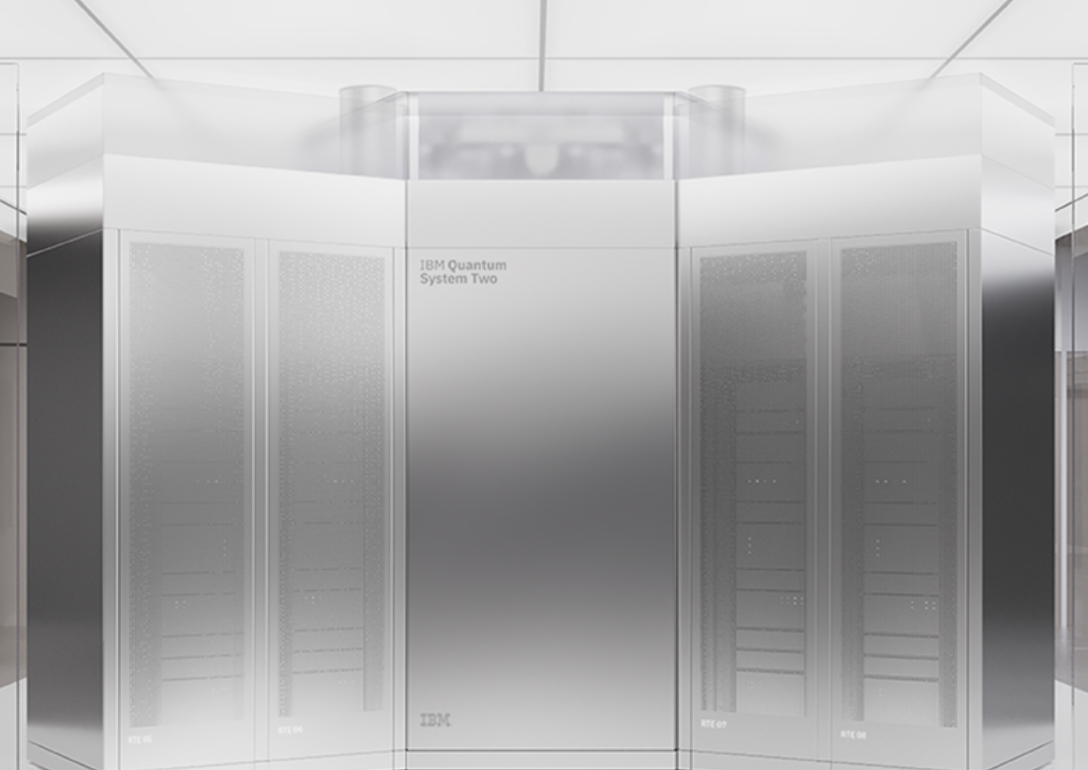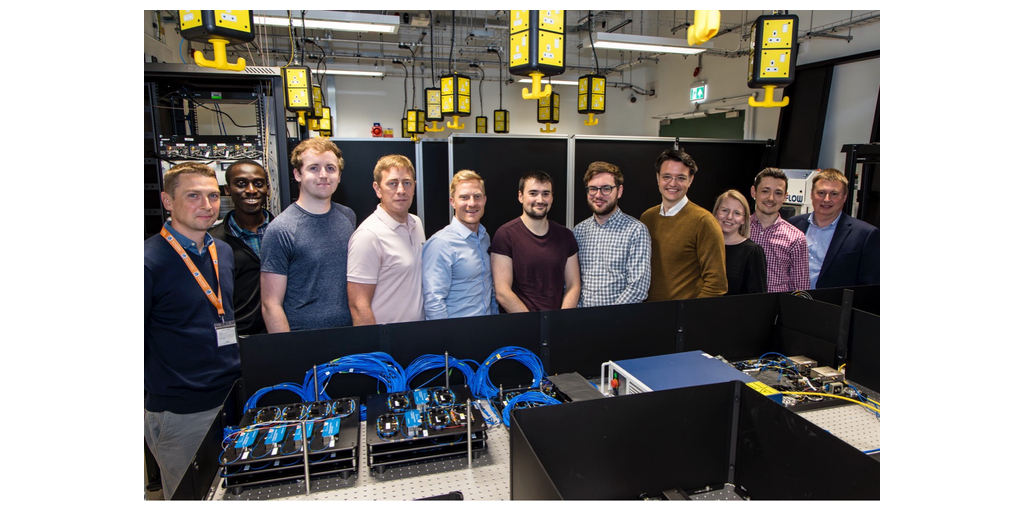Insider Brief
- IBM roadmap calls for a 100,000-qubit quantum-centric supercomputer by 2023.
- The company is setting up critical research partnerships with world-leading universities and scientific institutions.
- Image: IBM Quantum System Two, visually rendered here, is a system designed to be modular and flexible, combining multiple processors into a single system with communication links. (Credit: IBM)
IBM is setting its sights on a 100,000-qubit quantum-centric supercomputer within a decade, according to a statement from the company and an updated roadmap.
The company will be teaming up with the University of Tokyo and the University of Chicago to help develop the 100,000-qubit system. IBM executives believe this computer will “serve as a foundation to address some of the world’s most pressing problems that even the most advanced supercomputers of today may never be able to solve,” such as understanding chemical reactions, dynamics of molecular processes, tackling climate change, and other massive challenges.
“Over the past several years, IBM has been at the forefront of introducing quantum technology to the world,” said Arvind Krishna, Chairman and CEO of IBM, in a statement. “We have achieved significant progress along our roadmap and mission to globally establish useful quantum technology, so much so that we can now, with our partners, truly begin to explore and develop a new class of supercomputing anchored by quantum.”
IBM will partner with the University of Chicago, the University of Tokyo, and other partners to develop the system. The company will also expand these partnerships to include Argonne National Laboratory and Fermilab National Accelerator Laboratory, both of which are members of the Chicago Quantum Exchange.

“Achieving breakthroughs at scale in quantum technology requires deeply rooted and productive collaboration around the world and across a broad range of industry, academic, and government partners,” said Paul Alivisatos, President of the University of Chicago. “Quantum information science and technology is at a crossroad where foundational discovery and technical innovation will combine to create real breakthroughs. The University of Chicago is thrilled to partner in this endeavor.”
“We expect our partnership will lead to scientific breakthroughs, acceleration of the adoption of quantum computing for the coming era, and active engagement into the critical societal challenges of humanity. We also aim to contribute to the realization of a better future society by nurturing diverse talents,” said Dr. Teruo Fujii, the President of the University of Tokyo.
IBM has already outlined some of the steps to build this system on its Quantum Development Roadmap. IBM will need to scale and connect growing numbers of quantum processors through quantum interconnects, as well as develop error-correction technologies.
IBM Roadmap to 100,000 Qubits
According to the statement, IBM’s steps include:
- Debuting three cornerstones of its necessary architecture for quantum-centric supercomputers by the end of 2023. One is the new 133-qubit ‘IBM Heron’ processor. This processor is a complete redesign of IBM’s previous generations of quantum processors, with a new two-qubit gate to allow higher performance. It will also be compatible with future extensions to enable modular connected processors to grow the size of the computer.
- Introducing IBM Quantum System Two. The new flagship system is designed to be modular and flexible to introduce elements of scaling in its underlying components, including classical control electronics and high-density cryogenic wiring infrastructure. This system is targeted to be online by the end of 2023.
- Introducing quantum middleware. The company will create a set of tools to run workloads on both classical and quantum processors. This includes tools for decomposing, parallel execution, and reconstructing workloads to enable efficient solutions at scale.
Building the Blocks of Quantum-Centric Supercomputing
The plans for this quantum-centric supercomputer are expected to involve innovations at all levels of the computing stack and encompass the convergence of the fields of quantum computing and quantum communication, as well as the seamless integration of quantum and classical workflows via the hybrid cloud.
Because such a computer has never been made before, the first step will be to lay out a blueprint. The design will have to integrate classical computers and quantum computers – a challenging task to date – as well as break new ground in quantum communication and computing technology.
For more about the path to a 100,000-qubit quantum-centric supercomputer, read the IBM Research blog.
For more market insights, check out our latest quantum computing news here.




















